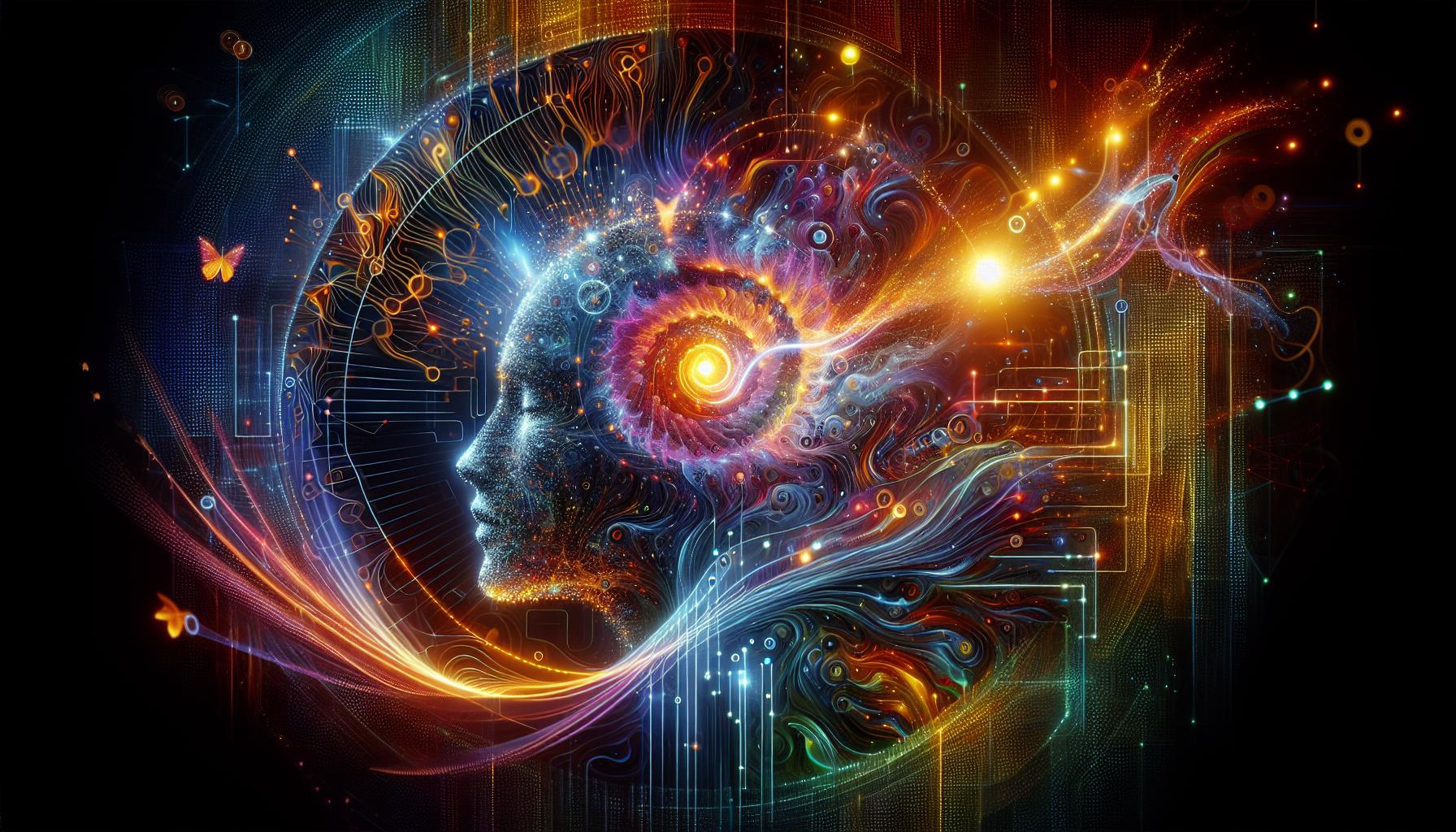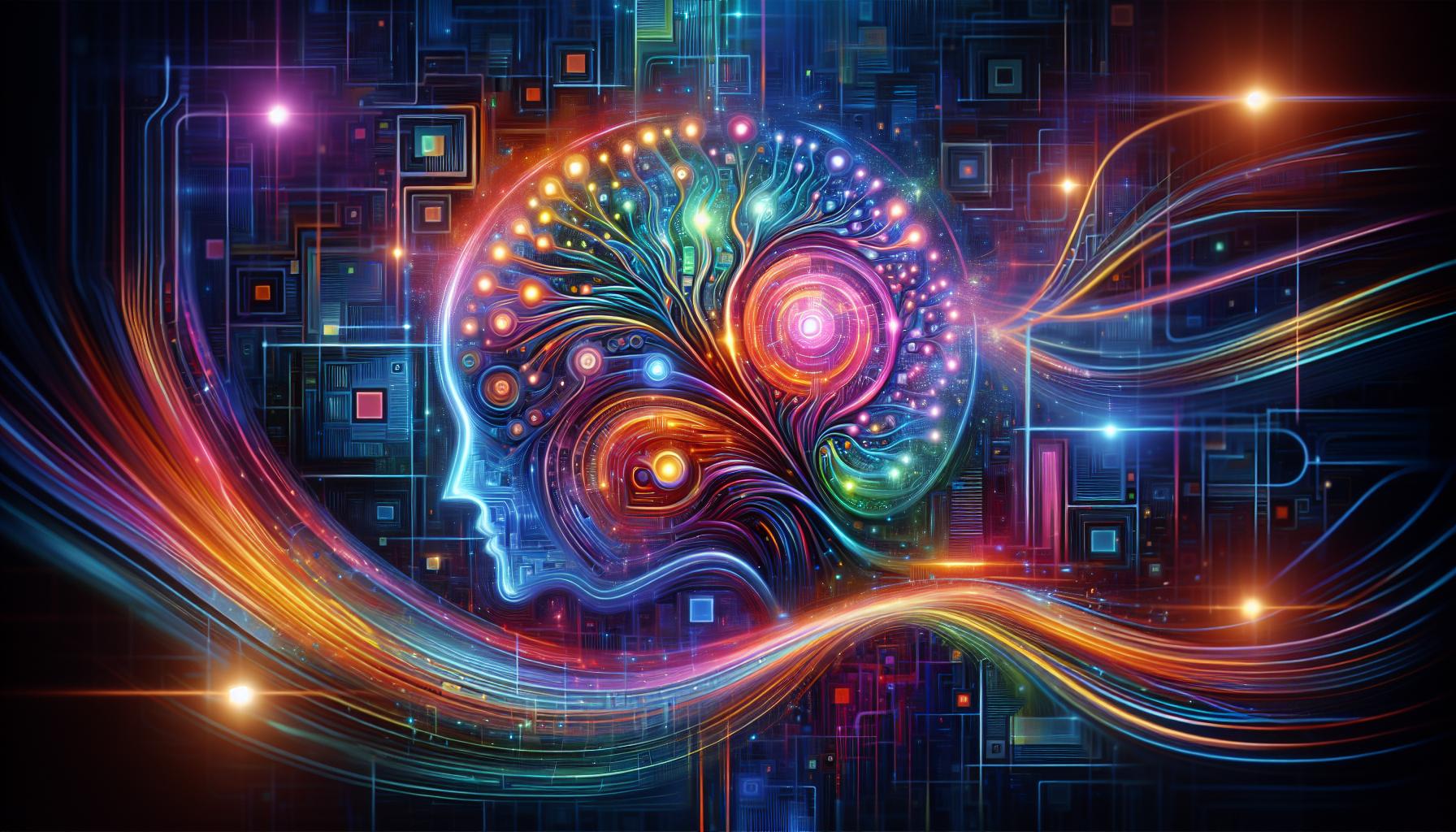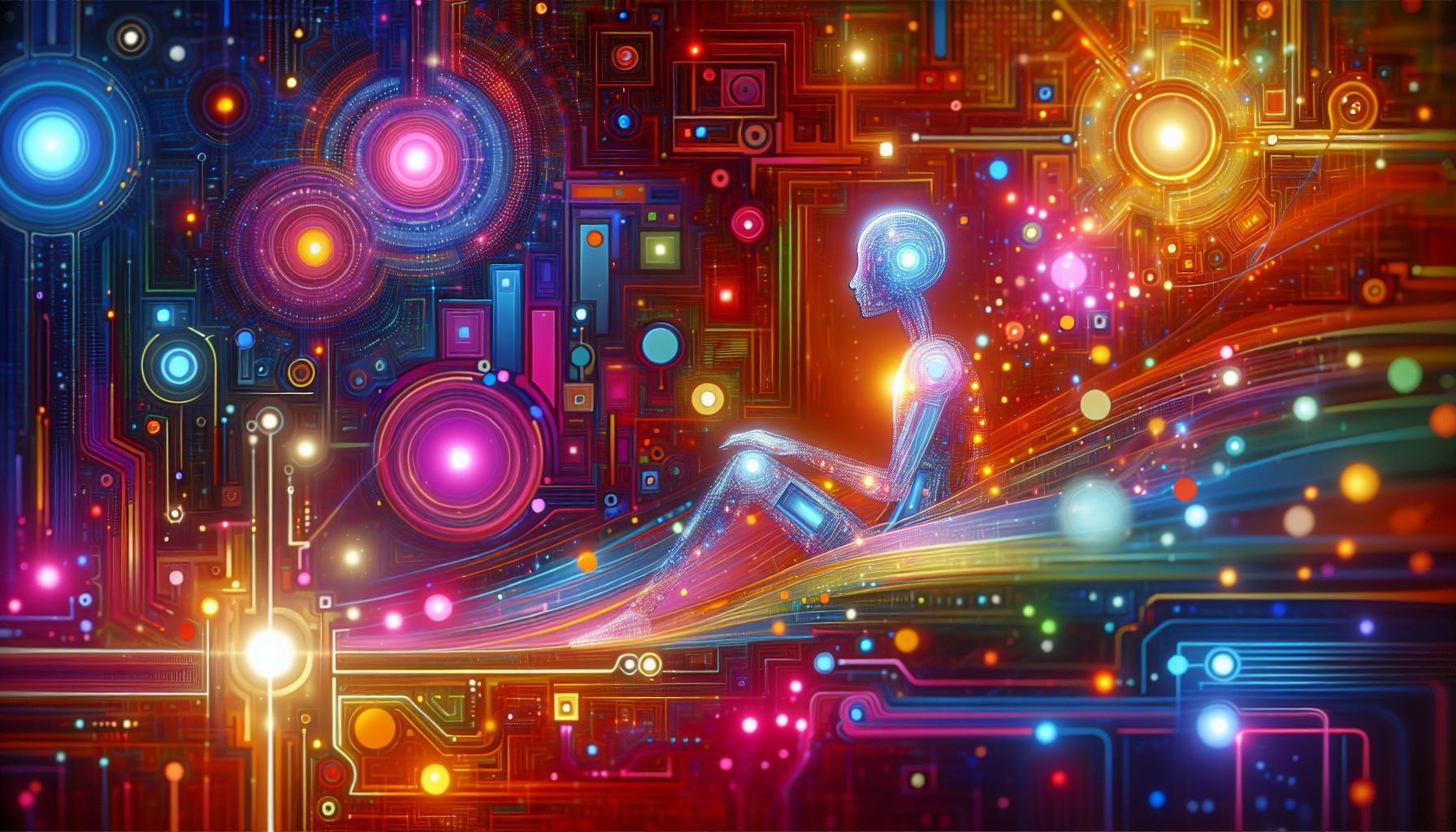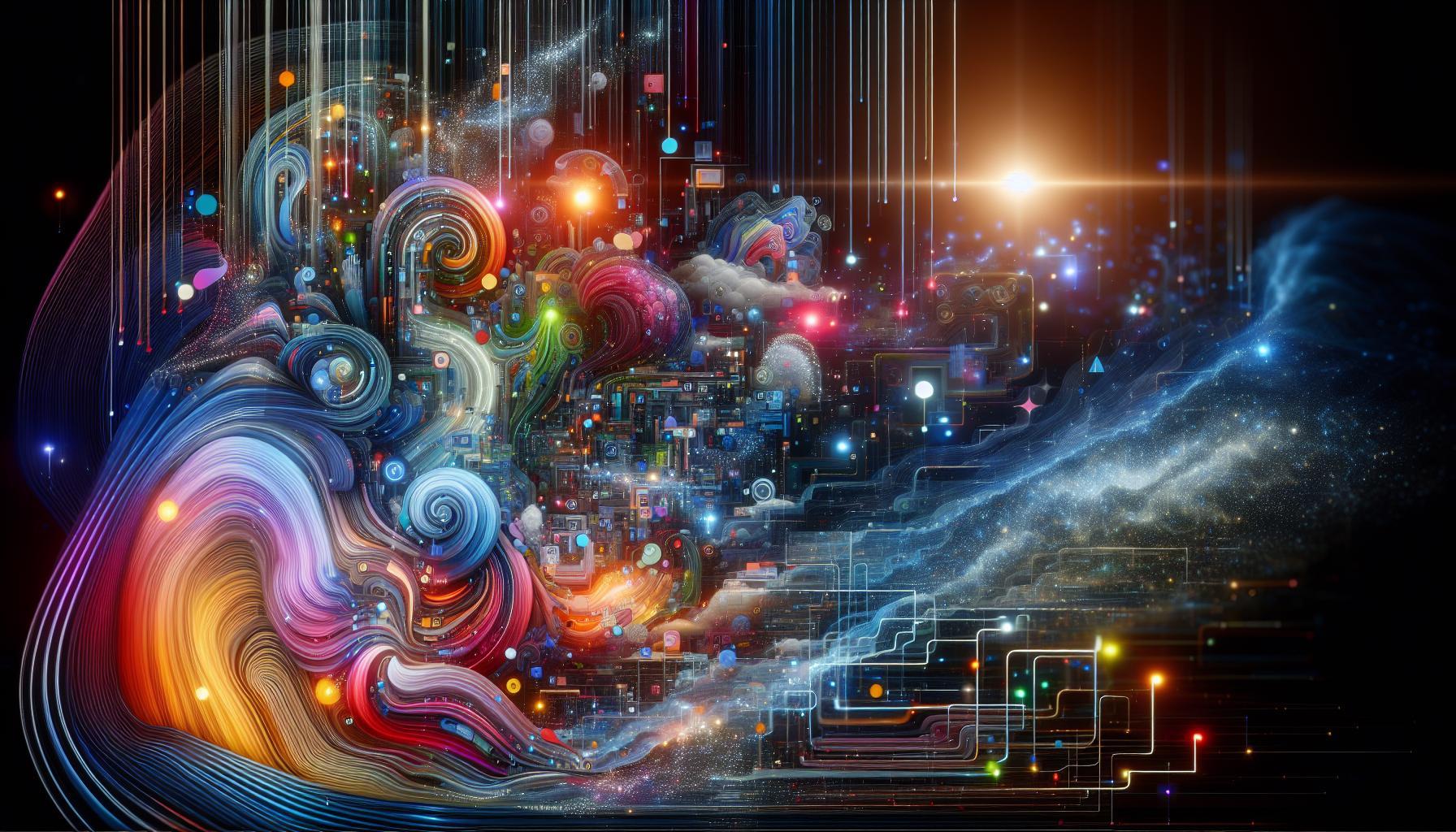In the fast-evolving landscape of AI art generation, understanding whether tools like Stable Diffusion retain your creative prompts can significantly influence your workflow efficiency. This article explores the critical question of prompt storage and retrieval, ensuring you can streamline your creative process and focus on producing stunning artworks without losing valuable ideas.
Understanding Stable Diffusion: What It Is and How It Works
In the realm of artificial intelligence, understanding how tools like Stable Diffusion work can significantly enhance your creative output. The technology leverages advanced machine learning algorithms to generate high-quality images from textual descriptions, reshaping traditional content creation processes. By employing a diffusion model, it effectively transforms random noise into coherent visuals, allowing users to explore their creative ideas without being hindered by technical limitations.
How Stable Diffusion Operates
At its core, Stable Diffusion operates by iteratively refining an image from a noise state based on user-input prompts. The model is trained on vast datasets, enabling it to grasp various styles, concepts, and contexts, which helps in producing images that align closely with user specifications. The process can be broken down into the following steps:
- Text-to-Image Generation: Users input descriptive text, and the model interprets this to generate corresponding images.
- Iterative Refinement: Random noise is progressively adjusted into a clear image through a series of steps, guided by the relationship between the input text and inherent visual features.
- Pre-Training and Optimization: By leveraging large datasets and sophisticated training techniques, the model becomes adept at understanding both structure and semantics in images.
This innovative approach not only simplifies the creative process but also allows for flexibility. Artists and creators can experiment with various artistic styles, leading to richer content creation experiences.
Efficiency in Workflow
One of the key advantages of utilizing Stable Diffusion is its ability to streamline workflows, particularly in digital art and content generation. The inquiry, “Does Stable Diffusion save prompts?” is particularly relevant for users looking to maximize efficiency. By remembering or suggesting previously used prompts, creators can easily revisit successful ideas or refine existing concepts without starting from scratch.
For instance, an artist may begin with a broad concept, using Stable Diffusion to generate initial images. Once satisfied with a generated piece, they can save the prompt for future iterations or related projects. This capability transforms sequential creative tasks into a more integrated experience.
| Feature | Description |
|---|---|
| Prompt Management | Ability to save and recall effective prompts to expedite the creative process. |
| Customization | Users can fine-tune images based on specific artistic styles or themes. |
| Community Sharing | Access to community-shared prompts and images fosters collaboration and inspiration. |
By harnessing the capabilities of Stable Diffusion, creators are not only able to experiment and innovate but also maintain an efficient workflow that respects both time and creative energy. This powerful tool pushes the boundaries of digital art, inviting more individuals to participate in the creative process.
The Role of Prompts in AI-Generated Images: A Deep Dive
Creating stunning AI-generated images heavily relies on the quality and specificity of the prompts provided to the model. These text prompts serve as the backbone of the image generation process, guiding the algorithm in producing visuals that align closely with the user’s creative vision. As AI tools like Stable Diffusion become integral to artistic workflows, understanding how to craft effective prompts can significantly enhance the outcome of the images generated.
In the realm of AI art creation, prompts can be seen as instructions that dictate both the content and style of the imagery. For instance, a prompt that includes detailed descriptors-such as color palettes, moods, and specific objects or themes-can lead to results that better fit the intended artistic direction. When working with systems like Stable Diffusion, it is crucial to embrace both specificity and creativity in writing prompts. A simple prompt like “a cat” will yield a generic image, while a more elaborate structure such as “a fluffy Persian cat lounging on a velvet cushion in a sunlit Victorian room” will provide a more nuanced and visually rich result.
To further enhance your outputs, consider the utility of saved prompts. Tools that allow users to store and access their previously used prompts can streamline the creative process, making it easier to revisit ideas or refine concepts with minimal effort. This aspect ties back to the question of whether Stable Diffusion saves prompts, which directly influences how efficiently artists can manage their projects. By maintaining a library of effective prompts, creators can not only save time but also create a more cohesive body of work that aligns with their artistic goals.
Additionally, experimenting with various prompt structures and formats can lead to surprising and unique outcomes. Here are a few actionable strategies for generating effective prompts:
- Utilize adjectives to enrich your descriptions.
- Incorporate artistic styles, such as “in the style of Impressionism” or “using a retro comic book aesthetic.”
- Specify the desired composition, such as “close-up portrait” or “wide landscape view.”
- Combine multiple elements, e.g., “a futuristic city skyline at sunset with flying cars.”
By leveraging the potential of prompts in AI-generated images, artists can harness the full capability of tools like Stable Diffusion, ensuring a more fruitful and efficient creative workflow.
Can You Save and Reuse Prompts in Stable Diffusion?
In the ever-evolving landscape of AI-generated imagery, the ability to save and reuse prompts can significantly enhance creative workflows. For artists and designers utilizing Stable Diffusion, efficient management of prompts allows for consistency and experimentation without the need to start from scratch each time. By leveraging this capability, you can not only streamline your creative process but also cultivate a library of prompts that yield visually stunning results.
When considering whether you can save and reuse prompts in Stable Diffusion, it’s essential to understand the tools at your disposal. Most Stable Diffusion interfaces and platforms offer functionality that allows users to store their favorite prompts. This feature is particularly advantageous when working on multiple projects that require a cohesive visual style or when you wish to iterate on earlier ideas. Many users find it helpful to create a document or database where they categorize prompts according to themes, styles, or specific elements like lighting and texture.
To further optimize your workflow, consider the following practical tips for managing your prompts effectively:
- Create a structured prompt library: Keep your saved prompts organized by creating specific categories such as nature, portraits, or abstract art. This makes it easier to quickly locate what you need.
- Use descriptive tags: Tag prompts with keywords that describe their visual characteristics or intended use, which can aid in quickly identifying the right prompt for a project.
- Document adjustments: When modifying prompts, document changes and their outcomes. This can help in understanding which modifications yield better results, thereby refining your prompt creation process.
- Regularly review and refine: Periodically assess your library to remove prompts that yield unsatisfactory images and to update successful prompts with new variations based on your ongoing creative discoveries.
In conclusion, saving and reusing prompts in Stable Diffusion is not only possible but also a highly effective strategy for artists aiming to maintain quality and inspiration in their work. By creating a diverse, easy-to-access library of prompts, you not only preserve your creative insights but also foster a more systematic approach to your artistic endeavors. Embracing this organizational aspect can greatly impact your efficiency and creativity in utilizing Stable Diffusion to its fullest potential.
Enhancing Your Creative Process: Tips for Effective Prompt Management
In the rapidly evolving landscape of digital creativity, effective prompt management can significantly elevate your workflow. By strategically harnessing prompts, you can streamline your process, overcome creative blocks, and enhance the quality of your outputs. Whether you’re an artist leveraging tools like Stable Diffusion or a writer seeking inspiration, mastering prompt management is essential for maintaining momentum and efficiency in your creative endeavors.
Understand and Organize Your Prompts
One of the foundational steps in enhancing your creative process is effectively organizing your prompts. Create a system to categorize prompts based on themes, tone, or intended use. This not only makes retrieval easier but also helps you quickly find inspiration when needed. Utilize digital tools or simple spreadsheets for tracking, ensuring that you can access a wide range of ideas at a moment’s notice. Here’s a simple template to start with:
| Category | Prompt | Source |
|---|---|---|
| Creative Writing | Write about a character finding a mysterious object. | Personal Journal |
| Digital Art | Create a piece that represents the concept of freedom. | Art Community |
Leverage Technology to Enhance Efficiency
Tools like LangChain are game-changers in streamlining prompt management. They provide frameworks for developing prompts and managing outputs efficiently. By integrating these tools, you can automate routine tasks, allowing for more focus on the creative aspects of your projects. Consider exploring various applications that cache responses and track usage patterns, which can provide insights into what prompts yield the best results.
Iterate and Personalize Your Prompts
It’s crucial to continually assess and refine your prompts. What works today may not spark creativity tomorrow. Experiment with different formats and structures until you find what resonates best with your style. A/B testing can be particularly beneficial; for example, take a single prompt and modify its wording or approach, then evaluate which version leads to more robust ideas or better artwork. This iterative process not only enhances creativity but also helps in understanding your evolving artistic voice.
By effectively managing your prompts, you’re not just preserving ideas but actively cultivating a vibrant source of inspiration that propels your creative process forward. The intersection of technology and creativity opens new avenues for exploration, ensuring that you’re always ready to capture the bursts of inspiration that define successful artistic work.
Real-World Applications: How Artists Use Stable Diffusion in Their Work
In the ever-evolving landscape of digital art, artists are increasingly harnessing the capabilities of Stable Diffusion to transform their creative processes. This powerful AI image generation tool not only enhances artistic output but also introduces a new dimension to creativity. By effectively saving and reusing prompts, as discussed in the article ‘Does Stable Diffusion Save Prompts? Keeping Your Creative Workflow Efficient’, artists can streamline their workflows and explore more intricate and ambitious projects.
One of the primary ways artists utilize Stable Diffusion is through rapid iteration and experimentation. The ability to generate a multitude of images from a single prompt allows for creative exploration without the extensive time commitment typically required for traditional methods. For instance, an illustrator might input several variations of a prompt to generate different stylistic interpretations, enabling them to quickly visualize concepts that would otherwise take hours or days to create by hand. This not only fosters creativity but also allows artists to meet tight deadlines, making them more competitive in the industry.
Enhancing Collaboration and Feedback
Another significant application of Stable Diffusion is its role in collaboration among creatives. Artists can quickly produce visuals to share with peers or clients, gathering feedback that can be immediately integrated into subsequent rounds of image generation. This iterative process is particularly beneficial in collaborative environments, such as video game development or advertising, where multiple stakeholders are involved. By saving prompts, artists can revisit previous iterations and refine their work based on constructive criticism, ensuring that the final output aligns with the project’s vision.
Examples of Successful Implementations
Several artists have reported impactful changes in their workflows after incorporating Stable Diffusion into their practices. For example:
- Concept Artists: Many concept artists use Stable Diffusion to create initial character sketches or environment designs, allowing them to visually communicate ideas to their teams rapidly.
- Graphic Designers: Designers often generate background images or textures that serve as a base for further manipulation in software like Photoshop, enhancing the overall quality of their work.
- Marketing Teams: Teams leverage the tool to create visually striking content for social media campaigns that can be tailored to different audiences by simply adjusting the prompts.
By integrating tools like Stable Diffusion into their workflows, artists can not only save time but also expand their creative horizons. The transformative potential of AI art generation is evident in how these technologies are reshaping creative collaboration, product development, and artistic expression itself. This adaptability to save and optimize prompts ultimately streamlines the artistic process, making it a valuable asset for modern artists navigating an intricate landscape of ideas and deadlines.
Overcoming Challenges: Best Practices for Prompt Optimization
In the realm of creative workflows, the nuances of prompt optimization can be the difference between mediocre results and exceptional outputs. As those engaged in AI-powered creativity know, crafting effective prompts is critical for harnessing the full potential of tools like Stable Diffusion. A common challenge faced is the ambiguity in initial instructions, which can lead to irrelevant or uninspired responses. By embracing best practices for prompt optimization, users can significantly enhance their creative output and streamline their workflow efficiency.
Clear and Concise Instructions
Start by ensuring that your prompts are clear and concise. This simplicity minimizes the chance of misinterpretation by the AI. For example, instead of saying “Create something cool,” specify what you’re looking for: “Generate a futuristic cityscape at sunset.” This precision in language helps mitigate confusion and provides the model with a clearer direction, resulting in outputs that are closely aligned with your creative vision.
- Define the Objective: Identify what you aim to achieve with the prompt.
- Use Specific Language: Opt for words that convey exact feelings or themes.
- Avoid Jargon: Keep the terminology accessible unless your audience is familiar with specific terms.
Iterative Testing and Feedback
Another effective strategy is to adopt an iterative approach to prompt refinement. After generating an initial output, review the results critically. Determine what worked well and what needs adjustment. This can be approached through A/B testing-altering one word or phrase at a time while keeping the rest of the prompt consistent. Such methods allow for the gradual honing of prompts, leading to improved AI responses and ultimately more satisfying creative results.
Utilizing Frameworks for Consistency
Employing established frameworks for constructing prompts can also streamline the process. Frameworks like CRISPE (Capacity, Relevant info, Statement, Personality, Experiment) help organize your thoughts and ensure that all necessary aspects are included in your request. This not only aids in generating more consistent outputs but also encourages a systematic approach to creativity.
| Framework Element | Description |
|---|---|
| Capacity | Indicate the AI’s expertise level needed. |
| Relevant Info | Provide any necessary background context. |
| Statement | Clearly articulate the task you need help with. |
| Personality | Specify the tone or style of the output. |
| Experiment | Encourage diverse solutions or iterations. |
By implementing these best practices for prompt optimization within the framework of creative tools like Stable Diffusion, you can not only overcome common challenges but elevate your creative workflow to new heights. These strategies are integral for producing high-quality content while minimizing repetitive revisions, ultimately driving innovation and efficiency in your projects.
The Future of AI Art: What’s Next for Tools Like Stable Diffusion?
The landscape of AI art continues to evolve at an unprecedented pace, with tools like Stable Diffusion leading the charge in creative innovation. As we look ahead, it’s clear that the integration of AI in the artistic process will not merely supplement creativity but rather transform it. By leveraging advanced machine learning algorithms, artists can now explore new dimensions of expression and efficiency, making the question of prompt management and overall workflow increasingly significant.
One of the most exciting prospects for AI art tools is the potential for autonomous learning. Future versions of Stable Diffusion and similar platforms are likely to incorporate features that analyze and learn from user interactions. This could lead to an automatic refinement of prompts based on past successes, allowing artists to streamline their creative processes significantly. By saving prompts, as discussed in “Does Stable Diffusion Save Prompts? Keeping Your Creative Workflow Efficient,” artists will be able to recall previous successful iterations easily, creating a repository of creative inspiration and saving valuable time during their workflow.
Enhanced User Interfaces
In addition to autonomous learning, the future design of AI art generators will prioritize user-friendly interfaces. As more users, from amateurs to experts, adopt these tools for their creative projects, there will be a strong demand for intuitive navigation and streamlined functionalities. Imagine a workspace where artists can drag and drop elements, manipulate images directly, or tweak parameters in real time, all while receiving instant feedback on how their changes affect the final output. This type of interactivity could drastically reduce the learning curve for new users while enhancing productivity for seasoned creators.
Collaboration and Community Features
The role of community will also reshape the future of AI art tools. Enhanced collaboration features, inspired by social platforms, will allow users to share prompts and outcomes, facilitating a rich environment for peer learning. Users could engage in challenges, critique each other’s work, or even collaborate on large projects, thus cultivating a community of creators who inspire and uplift one another. The importance of community engagement cannot be overstated, as it fosters a supportive atmosphere and encourages innovation through shared ideas and techniques.
| Future Trends in AI Art Tools | Description |
|---|---|
| Autonomous Learning | AI tools that learn from user interactions to refine prompt suggestions, enhancing creative efficiency. |
| User-Friendly Interfaces | Intuitive designs that simplify the creative process and encourage more users to explore AI art. |
| Collaboration Features | Social functionalities that promote community engagement and collective creativity among users. |
In conclusion, as tools like Stable Diffusion develop, they promise to redefine what it means to create art in the digital age. By focusing on areas such as prompt management, interface usability, and community building, the future will empower artists to not only generate visually stunning works but to do so with unprecedented efficiency and creativity. Staying ahead in this rapidly evolving field means actively engaging with these changes, allowing artists to embrace the tools that will shape their creative journeys.
Maintaining Workflow Efficiency: Streamlining Interaction with Stable Diffusion
To maximize the potential of your creative process using Stable Diffusion, maintaining an efficient workflow is essential. This AI model empowers artists by generating high-quality images from text prompts, but focused strategies are necessary to streamline interaction with it. By effectively managing your inputs and creative outputs, you can enhance both the speed and quality of your work.
One of the critical aspects of keeping your creative workflow efficient is the organization of prompts. Creating a repository of your most effective prompts can save you time and inspire new ideas. As you generate images, categorize these prompts based on style, theme, or effectiveness. This allows you to quickly reference and reapply successful prompts in future projects. Implementing tools or spreadsheets for this purpose can be invaluable; for instance, consider a simple table structure:
| Prompt | Style | Results |
|---|---|---|
| Surreal landscape with trees | Fantasy | High-quality, vivid colors |
| Cyberpunk city at night | Sci-fi | Well-defined, intricate details |
Additionally, leveraging the model’s features intelligently can further enhance your efficiency. Tools that allow you to tweak or save settings like “seed” values or noise levels can expedite the generation process. By experimenting with different parameters during the initial stages, you can quickly determine which configurations yield the best results. For example, starting with a larger seed image can set a strong foundation for concise visual outcomes.
Lastly, staying updated on community insights and workflows shared by other creators can introduce you to new techniques and best practices. Engaging with forums or platforms focused on Stable Diffusion can provide you with inspiration and breakthroughs in optimal use cases. Adopting a mindset similar to that of a darkroom photographer, where you gradually refine a concept from general to specific, can significantly improve your outcomes. By keeping the dialogue open with fellow artists, you can remain ahead of the curve, helping your creative workflow remain both efficient and innovative.
FAQ
Does Stable Diffusion Save Prompts? Keeping Your Creative Workflow Efficient
Yes, Stable Diffusion can save prompts. When you generate images, you can save the prompts used for later reference. This helps in maintaining consistency and allows you to refine your creative process.
In your workflow, saving prompts is essential for keeping track of successful iterations. Tools like Stable Diffusion allow you to document and reuse specific prompts, ensuring that you can replicate or enhance earlier works. By utilizing prompt libraries, artists can streamline their creative processes.
How can I manage prompts efficiently in Stable Diffusion?
You can manage prompts by using a structured approach. Creating a prompt repository or using dedicated software makes it easier to track and organize your prompts.
Consider categorizing your saved prompts by themes or styles, which assists in quickly retrieving them when needed. Tools or scripts can automate prompt saving, enhancing your efficiency in content generation.
Why does saving prompts matter for Stable Diffusion workflows?
Saving prompts is crucial for refining your artistic vision. It provides a reference point to analyze successful and unsuccessful image generations, streamlining your creative workflow.
With saved prompts, you can continuously improve your outputs. This establishes a more efficient workflow as you avoid starting from scratch each time. Documenting your experiments also aids in understanding how different variables affect image quality.
Can I use templates for my prompts in Stable Diffusion?
Yes, templates can be created for your prompts. This makes the prompt generation process faster and more consistent.
By developing a set of customizable templates, you can ensure that your prompts remain coherent and aligned with your artistic goals. Adjusting aspects like mood, style, and keywords within these templates can enhance your creative flexibility.
What format should I use to save prompts in Stable Diffusion?
It is best to save prompts in a clear and structured format. Using plain text, markdown, or JSON formats makes prompts easier to manipulate and categorize.
Keeping your prompts organized in a way that includes parameters, such as weights and emphases, can facilitate better image management. Consider leveraging tools that allow for quick retrieval and editing of prompts, which can enhance your workflow efficiency.
What are common mistakes when saving prompts?
Common mistakes include not documenting changes or using vague prompts. Both can complicate the iterative process and lead to confusion.
Always ensure that prompts are specific and detailed enough for future use. Regularly revisiting and updating saved prompts can help avoid inconsistencies or misunderstandings in the intended output.
How do parentheses and brackets affect prompt saving in Stable Diffusion?
Parentheses and brackets help define the emphasis in your prompts. When saving prompts, it’s important to maintain their structure for intended effects when generating images.
Using proper syntax, such as those found in examples, ensures that the model interprets your prompts correctly. Effective documentation includes the application of these symbols to assist in recalling how they influence image generation.
Wrapping Up
In summary, understanding how Stable Diffusion handles prompts is crucial for maintaining an efficient creative workflow. By recognizing that prompts may not always be saved automatically, you can take proactive steps to manage your projects more effectively. Techniques such as documenting your prompts, utilizing specialized tools, and integrating platforms like ComfyUI can significantly enhance your experience. We encourage you to explore these methods further, whether you’re a seasoned artist or just beginning your journey in AI-generated imagery. Embrace the possibilities that Stable Diffusion offers, and let your creativity flourish as you navigate the world of AI visual tools. Keep experimenting and innovating-your next masterpiece is just a prompt away!





